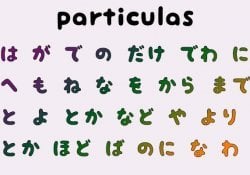The Tadoku (多読) method is a language learning technique based on extensive reading. The word "tadoku" is an abbreviation of "Takusan Doku", which means "reading a lot" in Japanese.
The main purpose of Tadoku is to improve reading comprehension, fluency and vocabulary by reading large amounts of Japanese material.
Índice de Conteúdo
Principles of the Tadoku Method
Here are the basic principles of the Tadoku method:
Choose suitable materials: It is essential to select reading materials that are suitable for your level of Japanese proficiency. Materials should be easy enough that you can understand at least 95% of the text without having to consult a dictionary. This allows you to enjoy reading and learn naturally from context.
Read a lot: The purpose of Tadoku is to read large volumes of material. The more you read, the greater the exposure to the language and, consequently, the greater the improvement in reading comprehension, vocabulary and grammar.
Don't use a dictionary: Avoid overusing dictionaries while reading. The idea is to learn from the context and absorb the language naturally. If you come across unfamiliar words, try to guess the meaning from the context and read on.
Enjoy reading: Choose reading materials that are interesting and enjoyable for you. This will increase the likelihood that you will continue reading and stay motivated in the learning process.
Skip to other material if necessary: If you find material too difficult or uninteresting, don't hesitate to move on to another one. The key to successful Tadoku is finding materials that suit your level and interests.

Reading materials for Tadoku
There are several sources of Japanese reading materials suitable for Tadoku. Some options include:
- Textbooks and graded readings: Many Japanese textbooks include graded readings, which are short texts tailored to different skill levels.
- Mangas and light novels: Mangas and light novels can be an excellent way to immerse yourself in the Japanese language and culture. In addition, they often contain dialogue and colloquial expressions, helping to improve your understanding of spoken Japanese.
- Children's and youth books: Books aimed at children and teenagers can be more accessible for Japanese learners, as they often have simpler vocabulary and grammatical structures.
- Websites and blogs: Reading Japanese-language websites and blogs about topics you're interested in can be an engaging and up-to-date way to practice reading.
- News and articles: Reading news and articles in Japanese can help you become familiar with vocabulary and expressions used in more formal and informative contexts.
By applying the Tadoku method and reading extensively in Japanese, you can improve your reading comprehension, increase your vocabulary and improve your grammar skills in a more natural and enjoyable way.
Tadoku can also help you develop reading fluency, allowing you to read Japanese texts faster and more efficiently.

Tips to improve the effectiveness of Tadoku
Set reading goals: Set clear and realistic reading goals to keep you motivated and track your progress. This could include daily or weekly goals for time spent reading, or the number of pages read.
Keep a reading log: Write down materials that you read and make notes about interesting words or phrases that you came across. This will help reinforce learning and track your progress over time.
Discuss what you read: Share your opinions and thoughts about the materials you read with friends, colleagues or teachers who are also learning Japanese. This can help consolidate your knowledge and improve your communication skills.
Switch between different types of materials: Reading a variety of Japanese materials, such as novels, news, and blogs, can help you become familiar with different writing styles and expand your vocabulary.
Practice reading aloud: Reading aloud can help improve your pronunciation and develop reading fluency. Also, it can help you to engage more with the text and retain information better.
By choosing materials suited to your level and interests, reading a lot, and applying the tips mentioned, you can get the most out of this technique and make significant progress in mastering the Japanese language.





